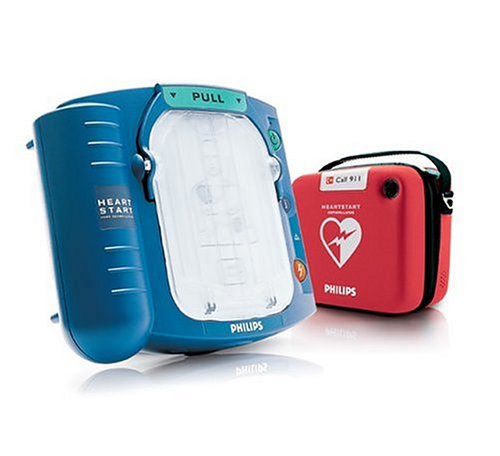For decades, when someone's heart stops beating, CPR has been the standard and most effective form of first aid. CPR is taught in classroom and community centers throughout the world, led in great part by the American Red Cross, who urges all Americans to become certified in the correct methods and techniques of giving CPR. However, new and increasingly affordable technology is now viewed by many as easier and more effective than CPR. An Automated External Defibrillator, often called an AED, may be a far more powerful tool for saving lives. Impressively, defibrillation via an AED is far easier to perform than CPR, even for someone without any training.
AEDs are lightweight, portable devices that can jumpstart a victim's heart by using an electrical pulse called a biphasic shock. Guiding the rescuer with a combination of simple and clear voice, text and graphical instructions, AEDs do nearly all of the work, enabling practically anyone save a life!
As opposed to CPR, which can easily be done incorrectly, too slowly, or too shallow of compressions so that the heart is left unaffected by the efforts and will not restart on its own, an AED is easy to use and can actually restart the heart with just the push of a button. Using the same technology found in emergency rooms, operating rooms, and doctor's offices all over the world, an AED can not only help an individual suffering from cardiac arrest until professional medical help arrives, it can literally save their life. Phillips, Zoll, Heartsine and other companies manufacture very portable defibrillators that are surprisingly affordable, and refurbished models are often available for under ,000, according to AED resource Web site Start A Heart/>.
Generally speaking, performing CPR is a great deal more complex than one may believe. Training and refresher classes are incredibly important to ensure that you not only perform the motions of CPR in the correct method and speed, but also know the appropriate times to perform CPR. Many AEDs however, use sophisticated software and simple voice commands to analyze a patient and instruct the operator on how to restart a heart. These AED devices are found in airports, schools, public spaces, and private homes all across the country, providing an advanced option in case an emergency requires resuscitation.
Many individuals do not have the strength or stamina to properly perform CPR, since the activity takes a great deal of energy to correctly perform in order to receive the best results. Furthermore, you may need to perform CPR for an extended amount of time depending on where the victim is currently located and how easily accessible they are by emergency medical staff. In contrast, individuals of all strengths can use the AED device, since it requires the individual merely to push a button in order to jolt the heart back to life using a shocking stimulation. Generally speaking, it only takes one or possibly two shocks to the heart in order for the victim's heart to properly respond, allowing the individual working the defibrillator to perform other medical tasks that my be necessary.
As they become increasingly common, you will find an AED in nearly every public place. However, you should still ensure you know the proper methods associated with CPR in case you need to assist someone and are unable to access an AED.
 | Price : $1,199.00
| Price : $1,199.00
 | Price : $1,199.00
| Price : $1,199.00